
Pthiriasis
[Pthirus pubis]
Causal Agent
Pthirus pubis, the pubic or crab louse, is an insect of the order Psocodea and is an ectoparasite whose only host are humans.
Life Cycle
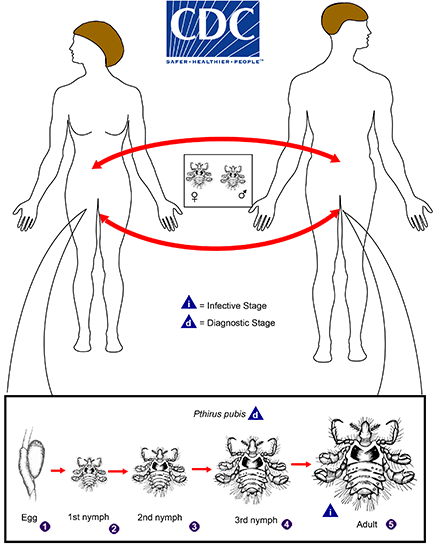
Pubic lice (Pthirus pubis) have three stages: egg, nymph and adult. Eggs (nits) are laid on a hair shaft  . Females will lay approximately 30 eggs during their 3-4 week life span. Eggs hatch after about a week and become nymphs, which look like smaller versions of the adults. The nymphs undergo three molts (
. Females will lay approximately 30 eggs during their 3-4 week life span. Eggs hatch after about a week and become nymphs, which look like smaller versions of the adults. The nymphs undergo three molts ( ,
,  ,
,  ) before becoming adults
) before becoming adults  . Adults are 1.5-2.0 mm long and flattened. They are much broader in comparison to head and body lice. Adults are found only on the human host and require human blood to survive. If adults are forced off the host, they will die within 24-48 hours without a blood feeding. Pubic lice are transmitted from person to person most-commonly via sexual contact, although fomites (bedding, clothing) may play a minor role in their transmission.
. Adults are 1.5-2.0 mm long and flattened. They are much broader in comparison to head and body lice. Adults are found only on the human host and require human blood to survive. If adults are forced off the host, they will die within 24-48 hours without a blood feeding. Pubic lice are transmitted from person to person most-commonly via sexual contact, although fomites (bedding, clothing) may play a minor role in their transmission.
Geographic Distribution
Pthiriais is common and is distributed worldwide.
Clinical Presentation
The majority of infestations are asymptomatic. When symptoms are noted they may include a tickling feeling of something moving in the hair, itching, caused by the an allergic reaction to louse saliva, and irritability. Pruritis caused by the bites of pubic lice may be very intense, and discoloration of the skin may occur if the infestation is left untreated for an extended length of time.
Modes of Transmission:
The main mode of transmission is person to person by sexual contact with someone who is already infested. Fomites (bedding, clothing) may play a minor role, although rare.
Pthirus pubis, adults and nymphs.
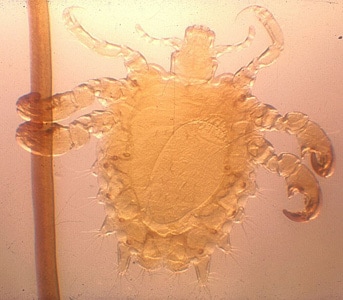
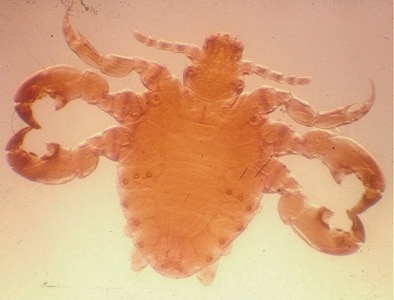
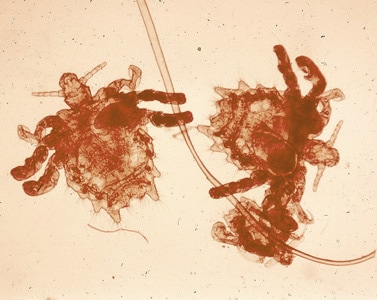
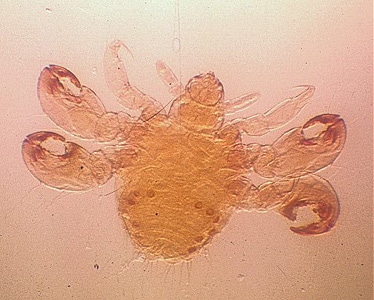
Pthirus pubis, eggs (nits).
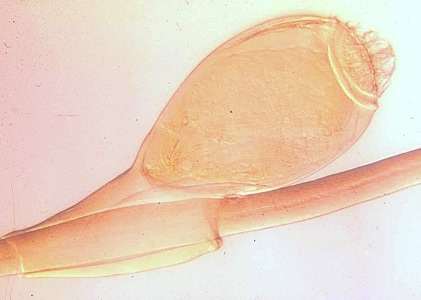
Diagnostic Findings
The diagnosis of pthiriasis is best made by finding a live nymph, adult louse, or a nit on the hair of a person, usually in the pubic or perianal area, although they may also be found on armpit, moustache and chest hairs.
Treatment Information
Treatment information can be found at: https://www.cdc.gov/parasites/lice/pubic/health_professionals/index.html
DPDx is an educational resource designed for health professionals and laboratory scientists. For an overview including prevention, control, and treatment visit www.cdc.gov/parasites/.